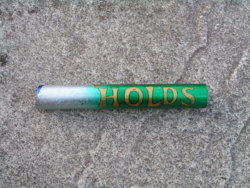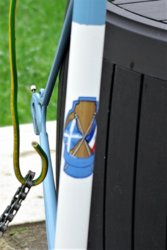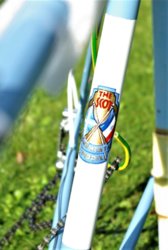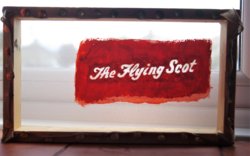If you have access to an original example so that you can either take photos or measurements you may be able to make a replica. The foil bit may make it a bit more difficult, but there are always ways of getting around things.
One method would be to print the transfer onto a clear adhesive medium using a laser photo copier. Photo copy shops used to be able to print onto clear adhesive plastic film for you. I made some butterflies which I stuck on some glass years ago. Then if you could find some adhesive foil stick the image onto it and cut it to the right dimensions.
Another way would be to use clear transfer paper which you can buy online for inkjet or laser printers. My inkjet printer ink doesn't dry on plastic films so you may need a laser printer. The transfer would need to be coated with acrylic lacquer from aerosol before it could be fixed to the foil.
If you do not have a copy to photograph you may have to resort to making a copy on your computer, finding what fonts were used and colours.
Another way would be to use whatever you can and draw or trace the image out, enlarge it and true up any discrepancies and then colour it in. The image could then be reduce to the correct size for printing.
Fun isn't it!
I'm still playing at looking at ways of doing things. My last attempt at screen printing wasn't too successful, but it is early days and a bit of a steep learning curve!











